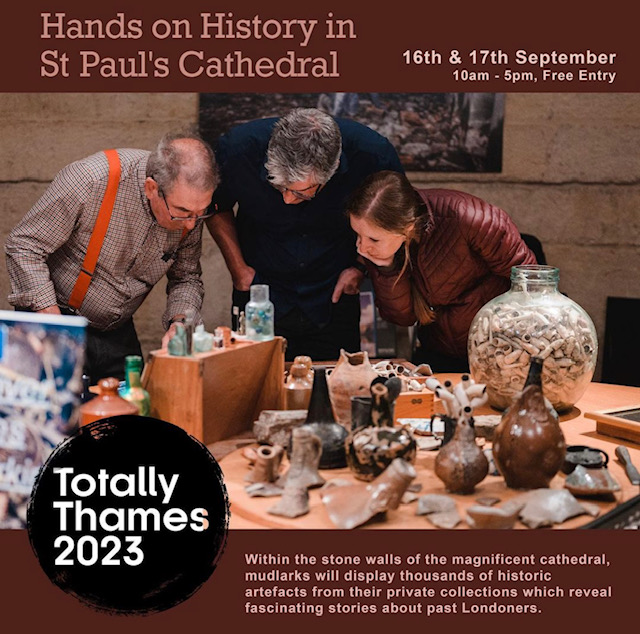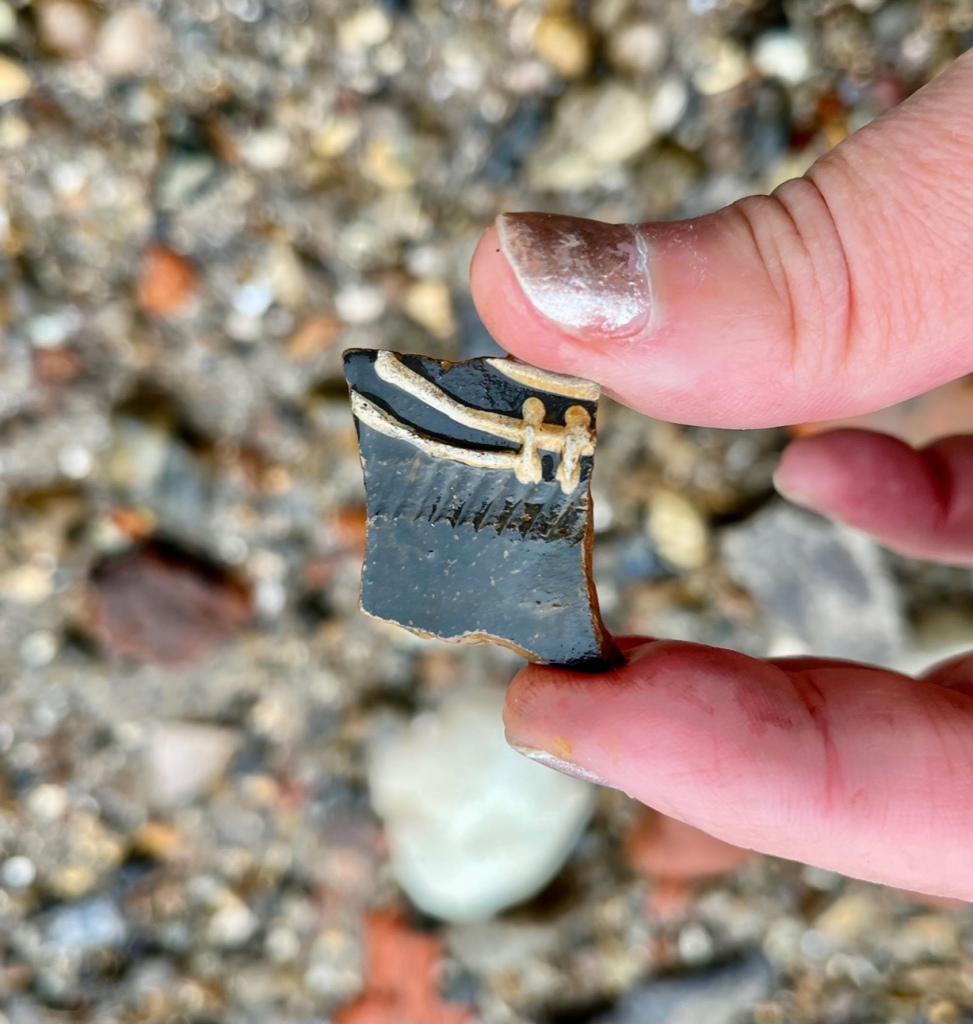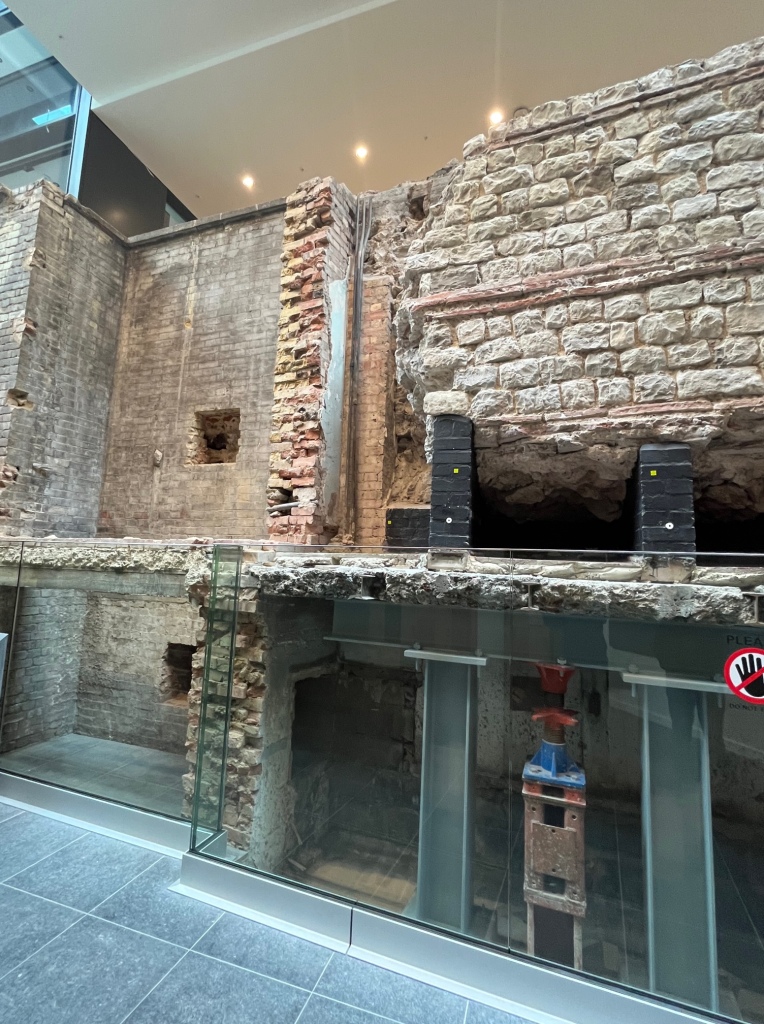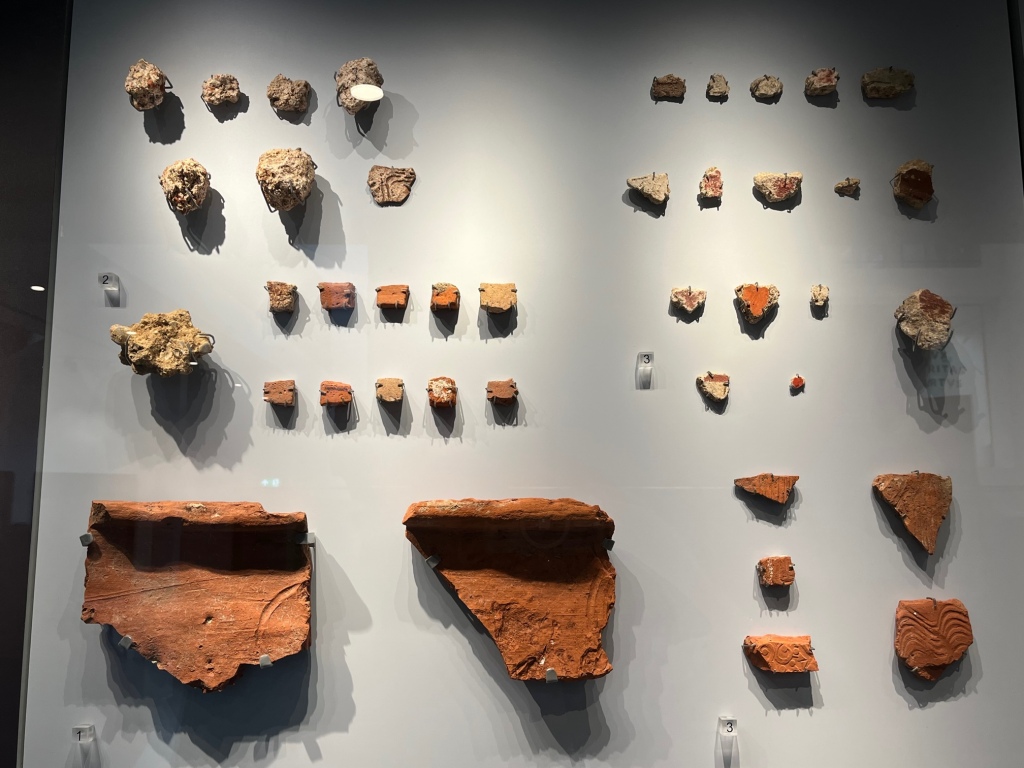September has come round again in the blink of an eye.
It’s been a busy summer, a family wedding in Provence (which was quite magical) but I haven’t had as much time to spend on the foreshore as I’d like. As I type, the weather isn’t exactly autumnal in London either. I’m currently melting as a result of an unexpected heatwave that has broken UK records for this time of year, and actually drove me off the foreshore at the beginning of the week as it was far too hot to be out mudlarking at midday, in 30 degrees plus. I’ll be happier when we’re back to what are more normal temperatures for this time of year, thank you very much.

September also means a return of the annual Totally Thames Festival with its unique, diverse, accessible and comprehensive programme of arts, cultural and historical events celebrating the River Thames in London. This features a number of mudlarking exhibitions, including this coming weekend’s event (Saturday 16th September and Sunday 17th September) in the atmospheric environment of the magnificent St Paul’s Cathedral.
I’m particularly excited about the St Paul’s event because it will also feature the work of sculptor Billie Bond (on Instagram as @billiebondsculptor) who will be exhibiting her ‘Foreshore Foundlings’, inspired by some spectacular mudlarking finds that remind us of the inevitability of life and our connection to past lives on the River Thames. One of the most striking of Billie’s exhibits (reproduced in black stoneware and gold leaf, and in my top three favourite mudlarking finds ever) is based on a small hand-carved medieval bone bead, known as a Memento Mori, spotted by fellow mudlark Caroline Nunneley (@carolinenunneleymudlark on Instagram)

Billie will also be giving a talk at the National Maritime Museum on Saturday 23rd September. You can follow @handsonhistory on Instagram for more information on the September mudlarking exhibitions and click on the link for further details regarding the Totally Thames calendar of events for this year’s celebration of the river https://thamesfestivaltrust.org/whats-on/
Late August was a good one for Roman finds from the river. Nothing va-va-voom spectacular, wonderful though that would be (and I’m still searching fruitlessly for a Roman bone gaming counter as they continue to elude me…) but instead fragments of things that to the untrained eye might not look that interesting.

This small but perfectly formed sherd is known as colour-coated ware, lost to the river in the days when Britain was a province of the Roman Empire, Londinium its capital. A place of status, a port, strategically important and protected by a 3 km city wall.

This pottery was made in the Nene Valley, modern day Peterborough area, and introduced by migrant potters from the Lower Rhineland in the mid 2nd century, later made in potteries in Colchester too.
I recently read an academic paper which told me that Nene Valley ware replaced the orange terracotta Samian ware as the preferred table vessels in high status Roman homes as fashions began to change. Nene Valley colour-coated ware has also been found in non Roman aristocratic homes showing how the upper classes eventually and willingly adopted Roman trends.
As this was high status pottery, its breakage would have caused great annoyance. And always those many questions that whirl around in a mudlark’s brain; how did this sherd get in the river? who broke it? who last held it in their hands? what sort of Roman curses did they scream on realising the piece was smashed to smithereens?
Nene Valley pottery was considered the height of sophistication, the pieces characterised by a pale base fabric with strongly contrasting darker surface colour (known as slip) and creamy decoration showing hunting scenes, grapes, vines, olive leaves and other types of floral design.
My found sherd of Nene Valley pottery also includes a nice bit of rouletting at the base of the decoration, characteristically seen both at the bottom and top of this kind of colour-coated ware.
This is why I love the Thames. Some days it gives you a nice little haul, some days nothing at all, and many in-between days where all you find is a small sherd of pottery but one with a rich history to tell, ancient voices, long gone, reaching out to us across the millennia.
If you want to read more about Nene Valley pottery I recommend the following introduction –
Nene Valley Archaeological Trust – https://www.nenevalleyarchaeology.co.uk/
If the Romans are your thing, I also heartily recommend a trip to the Roman City Wall at Vine Street, in the City of London, where you’ll find a surviving section of Roman Wall that once surrounded Londinium nearly 2,000 years ago.

The Roman Wall served as a protective boundary and also a status symbol, proclaiming the wealth and importance of this Roman City. When the Romans left in AD 410 the wall fell into disrepair, only rebuilt during the medieval era when it marked the limits of the medieval city of London.
As centuries came and went, London grew and the area around the wall underwent significant change – new buildings, shops, businesses, houses, taverns and wharehouses swallowed up what was once the Roman wall.

In 1905 the inner face of the wall was exposed and preserved in the basement of Roman Wall House. In 1979, the outer face was uncovered, together with a previously unknown bastion (defensive fortification.)
There are many objects on display, not all of them from the Roman period, belonging to people who lived and worked here over the centuries as London grew and evolved into the city we know today – these long lost items were found in rubbish dumps, defensive ditches, cesspits, workshops, houses, a warehouse and underneath an office block.

Do pop in and visit if you can. It’s free to enter though you need to book a time slot. The exhibition is at:
The City Wall at Vine Street, entrance at 12, Jewry Street, London EC3N 2HT. Opening times are 9am- 6pm, Sunday to Monday. Nearest stations are Aldgate or Aldgate East.
I always enjoy hearing about your finds. Thank you from Canada!
LikeLike
Thank you for your lovely comment, Brenda. You’re very kind.
LikeLike
I would LOVE to try mudlarking on the Thames myself!!!
LikeLike